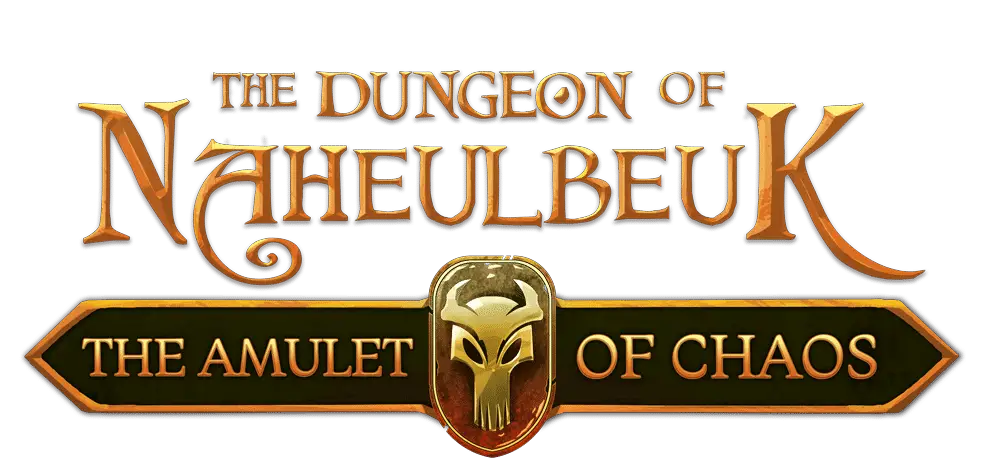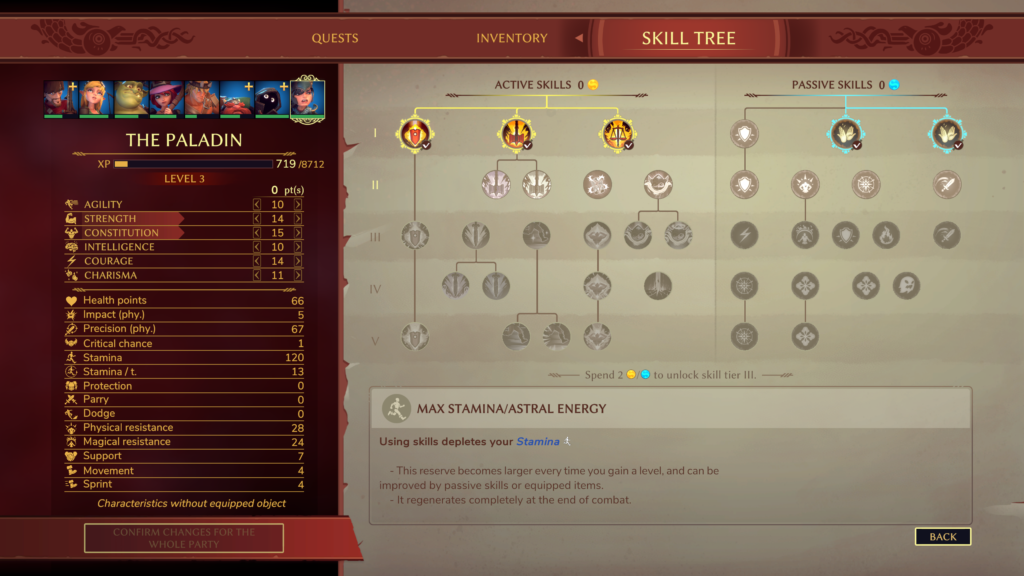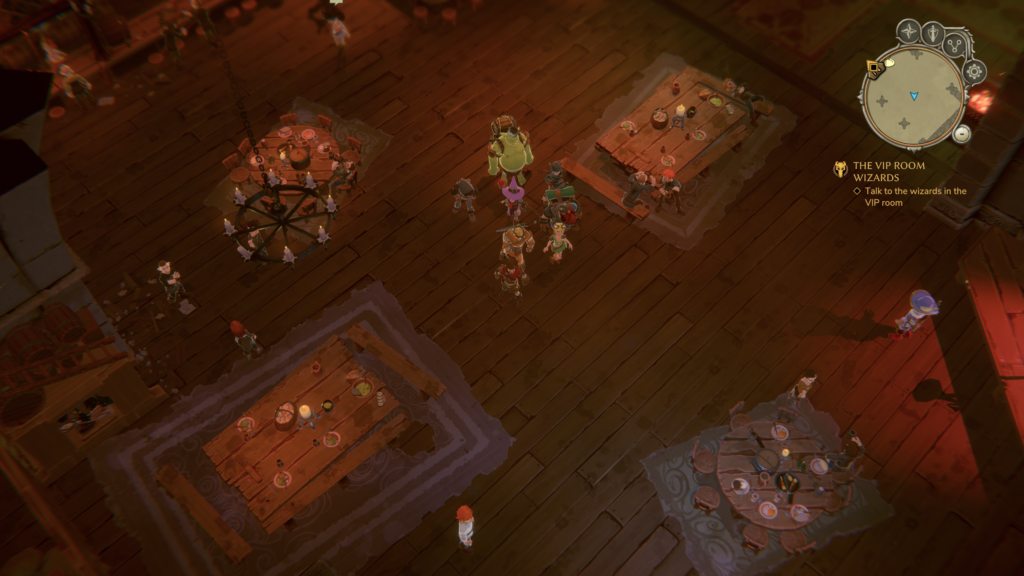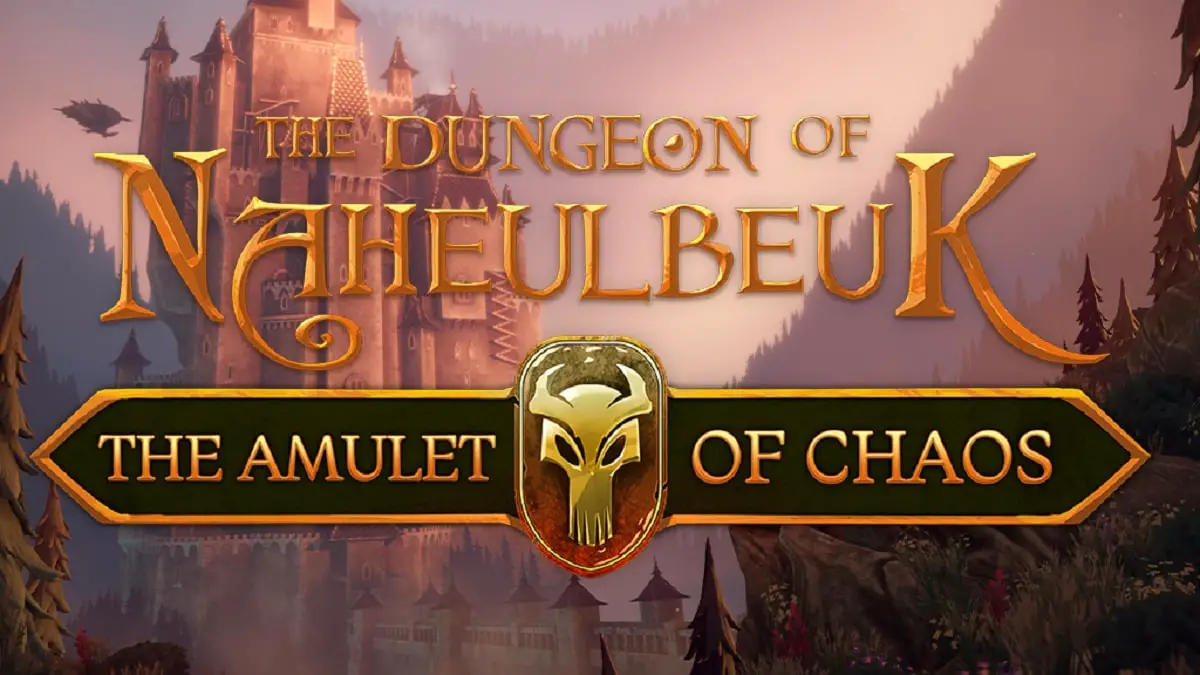
Introduction
The Dungeon of Naheulbeuk: The Amulet of Chaos developed by Artefacts Studio and published by Dear Villagers is a turn-based tactical RPG set in a humorous fantasy world. The player takes control of the following group of seven characters with an additional added into the mix after a certain point in the story. The Ranger, the Elf, the Thief, the Ogre, the Wizardess, the Barbarian, and lastly, the Dwarf. The campaign is fixated around the party of heroes finding the Amulet of Chaos and guiding the group of unconventional heroes along their journey in finding the amulets origins as well as figuring out why dark forces are after it.
Overview
The game starts out with an extremely helpful tutorial that teaches the player how to utilize each hero individually. You start off with the Ranger fighting a single orc. Shortly after, you are led to find the remaining members of your party throughout small-scale battles all while learning the mechanics of combat and each character. The tutorial does a solid job at easing the player into the plethora of options given to them without being too overwhelming. After a few fights and learning the technical of combat our heroes are united for a final fight. It is in this final fight that our heroes win the Amulet of Chaos via a goblin game show and start their journey down this treacherous path.
After locating the Amulet the party is introduced to our central location, the Dungeon of Naheulbeuk, or more specifically the inn inside of the dungeon. The inn is the party’s main area in which they will act in a multitude of options such as: taking a rest and restoring health points, trading with merchants, talking to other bystanders, and meeting the other three playable characters. There are three additional characters that the player may recruit into their party after reaching a specific part of the story. One by one they will join your party for their own quest, giving the player a solid chance to see each character’s abilities and move sets.
The Paladin is the first to join the party on a quest. The Paladin is a tanky, durable frontline combatant with plenty of protection making your party much more sturdy. The other two options for potential party members include the Minstrel and the Priestess. The Minstrel is primarily a backline support unit capable of providing buffs for your heroes while the Priestess is another backline support unit who utilizes healing. After reaching a particular point in the story the player will have the option to recruit one of these heroes into their party.
For my first playthrough, I chose the Paladin as I enjoyed the added durability to my party. Aside from the encounters and combat, you will spend the rest of your time running around the dungeon looting chests and caches and navigating to your next quest. I really appreciated the overworld looting as it isn’t typically done in turn-based games and it added another layer to equipping your party. It encouraged me to explore every single corner of the map.

Combat
The combat in the Dungeon of Naheulbeuk is best described as Xcom meets a fantasy setting. During combat, the player will utilize taking cover behind objects and walls to lower your chance of being hit by ranged units. The game also employs the classic square tiles/spaces that are infamous in the turn-based tactics genre, but it adds a nice twist to this style by being able to target enemies and position your heroes diagonally.
This was a really nice touch I enjoyed because it truly added more depth and options in which combat would play out. Other than this unique characteristic combat plays out pretty similar to most tactics games such as doing more damage for hitting an enemy from the back and opportunist attacks. Each hero has their own completely unique set of skills or abilities, both active and passive. Another thing I really enjoyed about the combat, more specifically the character progression, was the fact that each time a hero leveled up you gained one skill point for active abilities and one skill point for passive abilities.
To me, this just helped it feel like your heroes were progressing at a faster, more consistent rate. There is definitely a large variety in abilities throughout all characters. One of my favorite early abilities I attained on the Ogre was an ability in which the Ogre would burp and spew out a noxious gas in a three tile range in front of him that would damage and stun any enemies hit. Some notable passives include the Ogre’s ability of knocking down doors to help the party reach additional loot and the Rangers ability of equipping shields giving him a bit more protection.
The majority of fights play out pretty similar, although occasionally the room in which you fight will exhibit a variety of traps and unique experiences. One of the early fights showcases a multitude of traps that eventually destroy cages full of chickens that end up fighting against or alongside your party. In this particular fight, I was not only fighting skeletons and poisonous spiders but I was also up against around 5 or 6 chickens who were completely unpredictable. It’s experiences like this that keep the combat in The Dungeon of Naheulbeuk fresh and exciting at every turn.

Graphics
The visuals in The Dungeon of Naheulbeuk are gorgeous and kept me enticed in exploring every nook and cranny to see what I would encounter next. I really enjoyed the overall atmosphere of the game. Typically you are fighting inside the dungeon in grim rooms, but a lot of the overworld exploring leads you to courtyards and outside areas where there are fountains and shrubbery giving you the full spectrum of this massive dungeon.
I really enjoyed being outside at times and how the environment led you to look over the side of the walls of the dungeon, giving you an opportunity to see the astronomical mountain the dungeon sits on along with the trees and foliage that surrounds it. This really helped immerse me in the whole environment of the game. Another characteristic of the visuals that I really enjoyed was the fact that every single equipment item you would equip on a hero would have its own aesthetic look, providing another deep layer of customization. The game is chalk full of details, from throw up and gas to a zoomed in finishing animation right as you finally put an end to an enemy.
Soundtrack and Voice Acting
The soundtrack is another excellent method of immersing the player in the atmosphere of the dungeon. I really appreciated the way each track blended in with the environment. The voice acting is superb and really helps to distinguish each character with their own identity and personality. There wasn’t a character whose voice was too annoying or too shrill. I really enjoyed the Minstrel’s voice and thought it was humorous as it actually had me laughing all throughout my time spent with him.

Writing
The Writing in The Dungeon of Naheulbeuk is hilarious and keeps the game lighthearted. There would be moments in which I knew my party was doomed yet the writing and the constant bickering between the Dwarf and Elf kept me laughing and enjoying any situation I was thrown into throughout my entire playthrough. I appreciated this comical tone because a lot of games try to take themselves too seriously. The writing can also make decisions difficult to make such as deciding on your last party member. I say this because in making my decision I had to think about who in my party do I want to make the most happy? The Ogre enjoyed the Minstrel and his tunes, the Ranger had a crush on the Priestess and I just liked the Paladin as stated previously. It’s moments like these that truly show how the writing has an effect on the player and how the dialogue can depict who and what you play.
Critiques
Overall I truly do not have many negative things to say about The Dungeon of Naheulbeuk. Some small flaws I found were that at times it can feel a bit clunky as there are some flaws in the UI and pathfinding. I experienced a few bugs, such as wasd movement not working in the overworld but nothing was too detrimental to my gameplay. Being somewhat D&D based, the combat system is also left to RNG for a decent amount of time which can lead to some frustrating situations.
Achievements
Some of the things the game does the best at are its detail to its characters and character progression. It is also very aesthetically pleasing watching your party equip stronger, more fashionable items. The writing and dialogue between characters are also one of its strongest points as it really does keep the player feeling lighthearted and interested in what’s going on.







